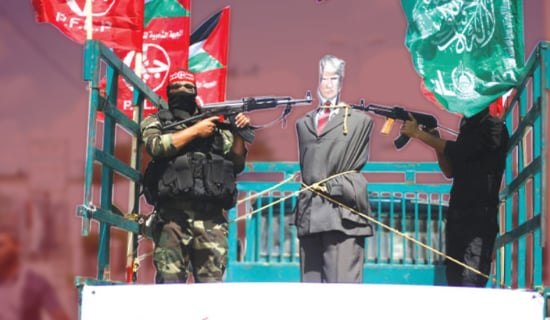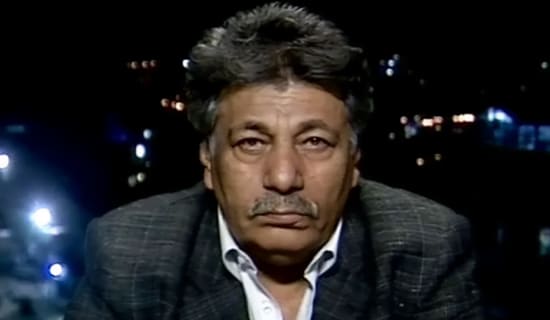Introduction
In advance of the Iranian Assembly of Experts' election of a new chairman, on March 8, 2011,[1] supporters of Iranian President Mahmoud Ahmadinejad acted to remove Hashemi Rafsanjani from the post of Assembly chairman, by promoting their own candidate, moderate-conservative Ayatollah Mahdavi-Kani.[2] Coinciding with this, Iranian Supreme Leader Ali Khamenei, on February 18, approved regime measures against protest movement leaders Mir Hossein Mousavi and Mehdi Karroubi, who since then have been under arrest.[3]
Indeed, on the morning of election day, March 8, the Iranian news agency Fars reported that Rafsanjani had withdrawn his candidacy in favor of Ayatollah Mahdavi-Kani, who immediately won a vast majority of the votes.[4]
With Rafsanjani's removal from this important center of power, it is evident that he has also lost the support of Iranian Supreme Leader Ali Khamenei. [5]
This can be seen as the completion of a decade-long effort by Khamenei to completely eradicate the reformist stream (i.e. the reformist movement) – an effort that began in the countrywide municipal elections in 2002, in the Majlis elections in 2004 and 2008, and the presidential elections in 2005 and 2009. The eradication effort later expanded to include as targets the conservative-pragmatic group of the Iranian regime elite headed by Rafsanjani, who had been the right-hand man of Ayatollah Ruhollah Khomeini, the founder of the revolutionary regime, and a partner in the leadership of Ali Khamenei. Other prominent members of this elite who have been targeted are protest movement leaders Mehdi Karroubi, Mir Hossein Mousavi, and former president Mohammad Khatami, and their associates.[6]
Rafsanjani's Removal from Assembly of Experts – Political Removal of Iran's Conservative Pragmatist Elite
As noted in MEMRI Inquiry and Analysis No 253, in June 2005, the election of Mahmoud Ahmadinejad as president marked the coming of a "second Islamic revolution."[7] In 2005, at the height of the power struggle in the regime's top echelons, the reformist camp was erased from the Iranian political scene, and the regime's center of gravity shifted to a conservative-fundamentalist-messianic group, the centers of which are clerics such as Ayatollah Mohammad Taqi Mesbah-Yazdi, Ahmadinejad's spiritual mentor, and the security establishment, particularly the Islamic Revolutionary Guards Corps (IRGC) the Basij paramilitary forces, and the intelligence apparatuses, whose members today control the Majlis and the institute of the presidency.
In an attempt to compensate for the disappearance of the reform-seekers' camp from the political arena, and to restore the political balance that was upset when the stream identified with Ahmadinejad took over the centers of power, in October 2005 Supreme Leader Khamenei reacted to Ahmadinejad's "second Islamic revolution" by formally recognizing Rafsanjani's position as No. 2 in the Iranian leadership, and by giving the Guardian Council, which Rafsanjani still heads, the authority of broad oversight. This, in Khamenei's view, balanced the increasing extremism of Ahmadinejad's supporters.[8]
The March 8 announcement by Rafsanjani, a founding member of the revolutionary regime, that he was withdrawing his candidacy for chairmanship of the Assembly of Experts is a tremendous victory for Ahmadinejad's Islamist-messianic stream and for the "second Islamic revolution" that he leads, in the struggle against the members of the old guard – Rafsanjani, Mousavi, Karroubi, and Khatami – over the identity of the Iranian state.
According to Ayandenews, next in line for elimination are Ahmadinejad rivals Majlis speaker Ali Larijani and Tehran mayor Mohammad Qalibaf, who are loyal to Supreme Leader Ali Khamenei.[9]
Who Does Khamenei Prefer For Assembly Chairman?
It was not clear who Supreme Leader Ali Khamenei preferred to head the crucially important Assembly of Experts.
Ayatollah Mohammad Yazdi, deputy Assembly of Experts head and known opponent of Rafsanjani, said that Khamenei had no preference regarding the candidates.[10] Also, Assembly members Ayatollahs Abd Al-Mahmoud Abdollahi and Akbar Qarah-Baghi, who are supporters of Ahmadinejad, told the Fars news agency the same thing, and added that the reports of Khamenei's support for Rafsanjani in the Assembly of Experts election were mere rumor. [11]
Rafsanjani, who was in recent months the target of a campaign of instigation and public denunciation launched by Ahmadinejad's circles, depicting him as being behind the 2009 unrest, has repeatedly declared his loyalty to Leader Khamenei and to the regime. In a mid-February 2011 meeting with four members of the Front of Followers of the Imam's (i.e. Khomeini's) Line and of the Leader [Khamenei], who warned him of an intent to remove him if he did not declare his loyalty to the regime and to Leader Ali Khamenei, Rafsanjani clarified that the "enemies of the regime are trying to drive a wedge between me and the leader (Khamenei)... I expressed my position [against] the fitna [civil strife] movement [i.e. the protest movement] in an Assembly of Experts declaration..."
Also in that meeting, Rafsanjani strongly condemned the protest movement, which he called fitna, and added that in the near future he will publish a book proving that he had "warned before anyone else that a fitna group existed in the country."[12]
Rafsanjani added: "I have three clear red lines: the regime, the 'rule of the jurisprudent,' and Khamenei... I love Khamenei and I would not trade this friendship for anything. He is beloved of my heart. If I cannot see him weekly, I feel the lack. He is unequalled in the leadership. In my view, if the status of the 'rule of the jurisprudent' in the country is harmed, the enemy will harm the regime."[13]
It should be noted that although Rafsanjani was never a member of or identified with the reform seekers, he was the moving force behind the scenes in the 2009 presidential candidacy of Mir Hossein Mousavi against Ahmadinejad.
As a member of the founding generation of the Islamic revolution in Iran, and as someone who was close to Ayatollah Ruhollah Khomeini himself, who has served in top posts in regime circles since the revolution, and who has had far-reaching influence in affairs of state, Rafsanjani was, until recently, in the view of Leader Khamenei, a counterweight to the increasing extremism of Ahmadinejad's supporters.
But now, with his removal from the important and powerful post as chairman of the Assembly of Experts, it appears that he has lost the support of Leader Khamenei.
* A. Savyon is Director of the Iranian Media Project; Y. Mansharof is a research fellow at MEMRI.
[1] The Assembly of Experts, which has 86 members, oversees the Supreme Leader, and has the authority to select him or remove him if he is not capable of carrying out his role in accordance with the constitution. The Assembly of Experts has never used this authority. The election of the chairman is carried out by secret ballot by members of the council.
[2] In a recent speech in Shiraz, Saffar Harandi, advisor to Islamic Revolutionary Guards Corps (IRGC) commander Mohammad Ali Jafari and an associate of Ahmadinejad, said, "Rafsanjani will be gradually removed from his positions, and in the elections that are to be held by the Assembly of Experts, we will witness his removal." Ebtekar, Iran, February 23, 2011. Majlis member Mohammad Reza Bahonar called on Rafsanjani to denounce the protest movement immediately, saying that if he did not he would lose the legitimacy to hold his current positions in the regime. Bahonar also vaguely threatened Rafsanjani, saying that if he did not denounce the protest movement, "the Iranian nation will give him a crushing response." Inn.ir, February 19, 2011; Tehran Emrooz, Iran, February 23, 2011. Majlis members Hamid Resai and Hamid Reza Taraqi said that due to his support for the protest movement, Rafsanjani was expected to be removed from his post as Assembly of Experts chairman. Inn.ir, February 23, 2011.
[3] For more on the regime's official reaction against the protest movement leaders, see MEMRI Inquiry and Analysis No. 668, "Iranian Regime Announces 'Day of Rage' against Karroubi, Mousavi; In Response, Protest Movement Calls On Followers to Demonstrate Against Religious Tyranny in Iran," February 18, 2011, Iranian Regime Announces 'Day of Rage' against Karroubi, Mousavi; In Response, Protest Movement Calls On Followers to Demonstrate Against Religious Tyranny in Iran
[4] ISNA, Iran, March 8, 2011
[5] There is intense rivalry between Iranian Supreme Leader Ali Khamenei and Rafsanjani. The limitation of Rafsanjani's authority with Khamenei's knowledge, began in the summer of 2010, when Rafsanjani was no longer allowed to lead Tehran Friday prayers in Tehran – something he had done regularly. In the dispute between Rafsanjani and Iranian President Mahmoud Ahmadinejad over the designation of the massive budget for Azar University, which Rafsanjani heads, Khamenei recently ruled in Ahmadinejad's favor.
[6] It should be clarified that the regime has in the past rid itself of high-status rivals who challenged the regime by placing them under house arrest – for example, Ayatollah Hossein Ali Montazeri, between 1997-2003, and now Mousavi and Karroubi, who are being held in a prison on the outskirts of Tehran where they were transferred after being placed under house arrest in February 2011.
[7] See MEMRI Inquiry and Analysis No. 253, "The 'Second Islamic Revolution' in Iran: Power Struggle at the Top," November 17, 2005, The ‘Second Islamic Revolution’ in Iran: Power Struggle at the Top
[8] According to Iranian online forums, Rafsanjani's appointment was not an initiative by Khamenei but was the result of pressure by the ayatollahs, among them then-judiciary authority head Shahroudi, then-Assembly of Experts head Mashkini, and others, to have Rafsanjani officially appointed as the regime's No. 2 man. Khamenei, who refused to depose Ahmadinejad following the fraudulent 2005 election, was forced to accept their demand and to place Rafsanjani above Ahmadinejad after the ayatollahs threatened to remove Khamenei himself from his post. See MEMRI Inquiry and Analysis No. 253, "The ‘Second Islamic Revolution’ in Iran: Power Struggle at the Top," November 17, 2005, The ‘Second Islamic Revolution’ in Iran: Power Struggle at the Top.
[9] Ayandenews, Iran, March 4, 2011.
[10] Kayhan, Iran, March 7, 2011.
[11] Fars, Iran, February 26-27, 2011.
[12] Mashregh News, Iran, February 27, 2011.
[13] Mashregh News, Iran, February 27, 2011.




